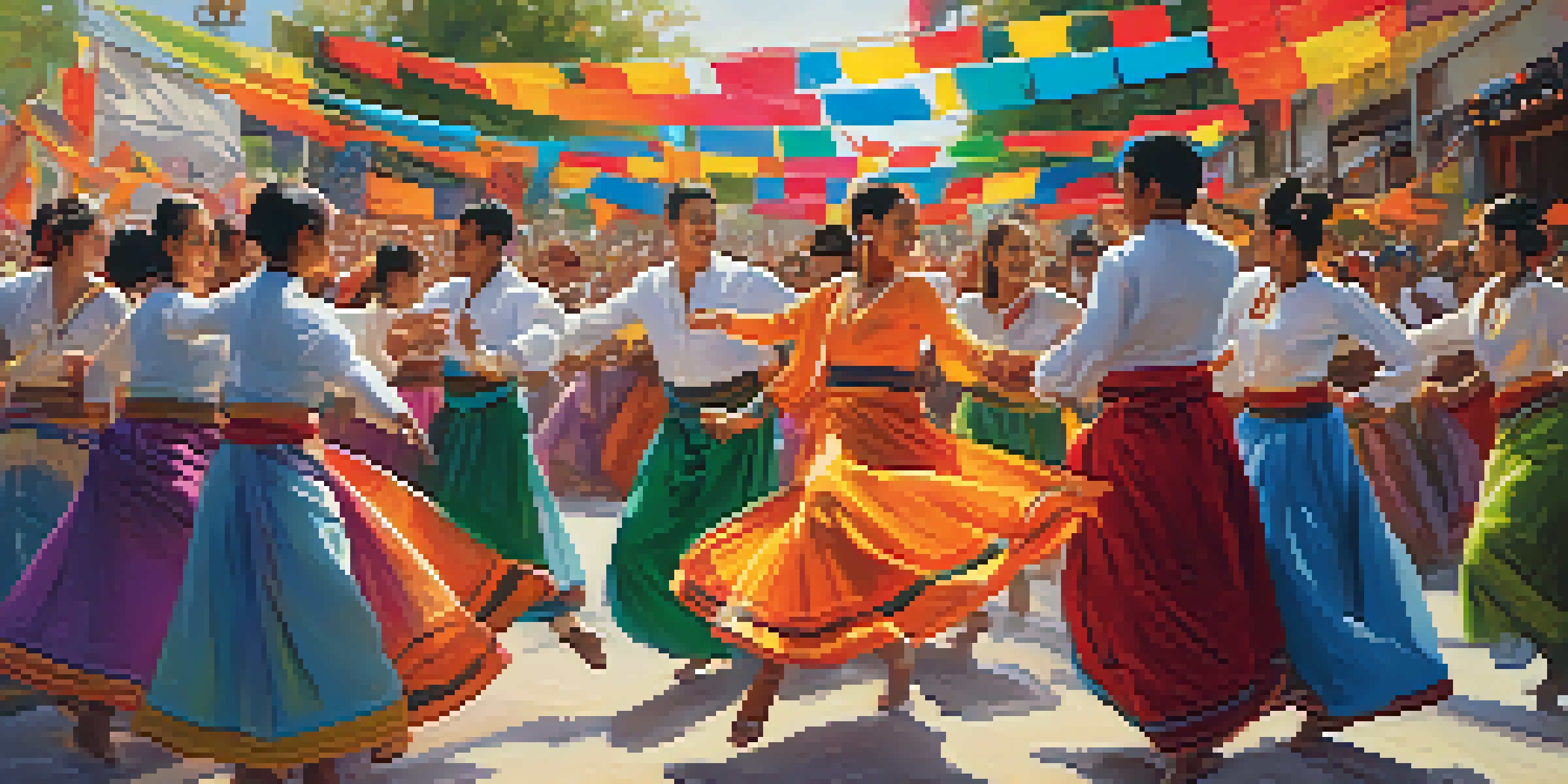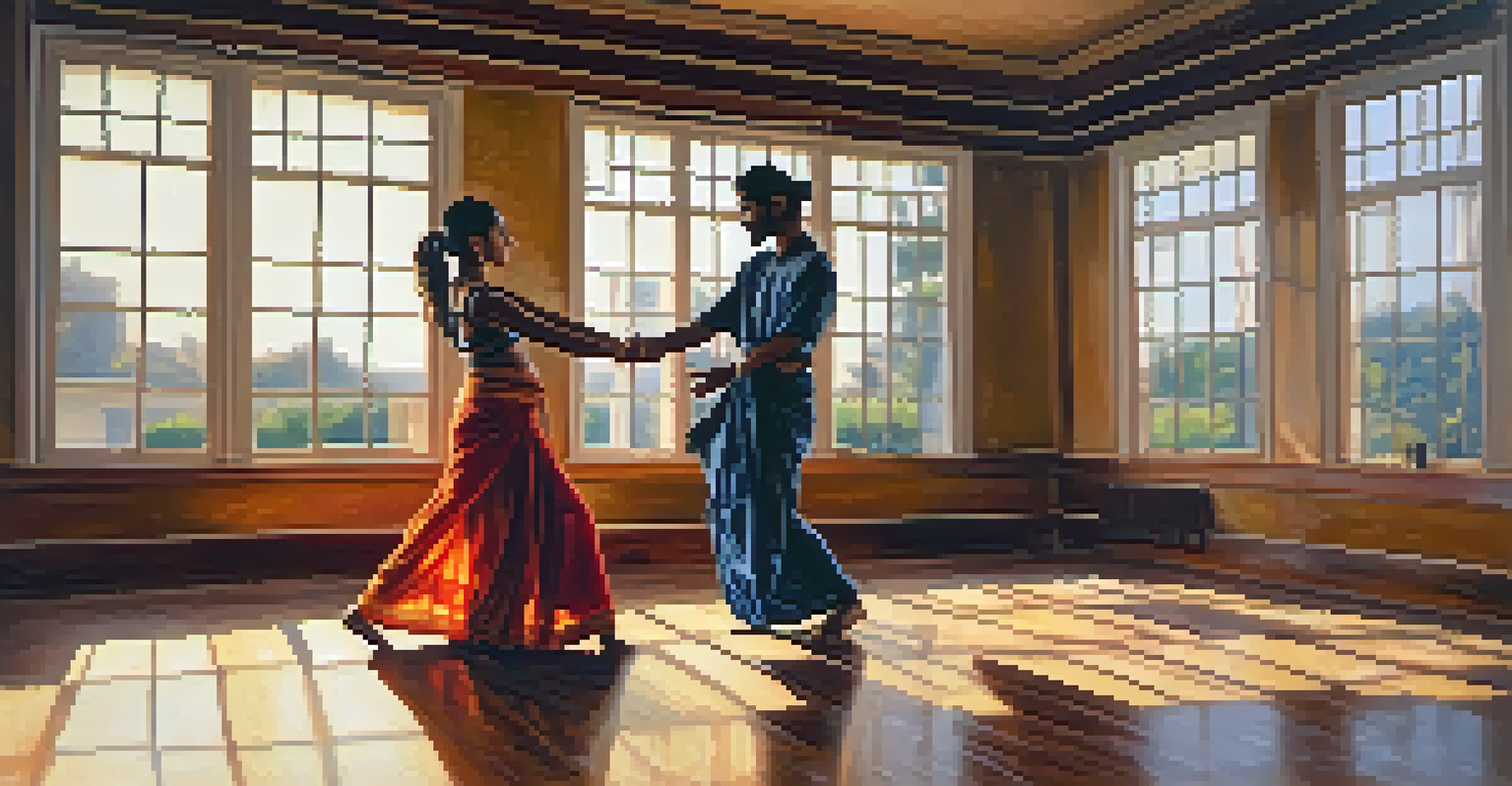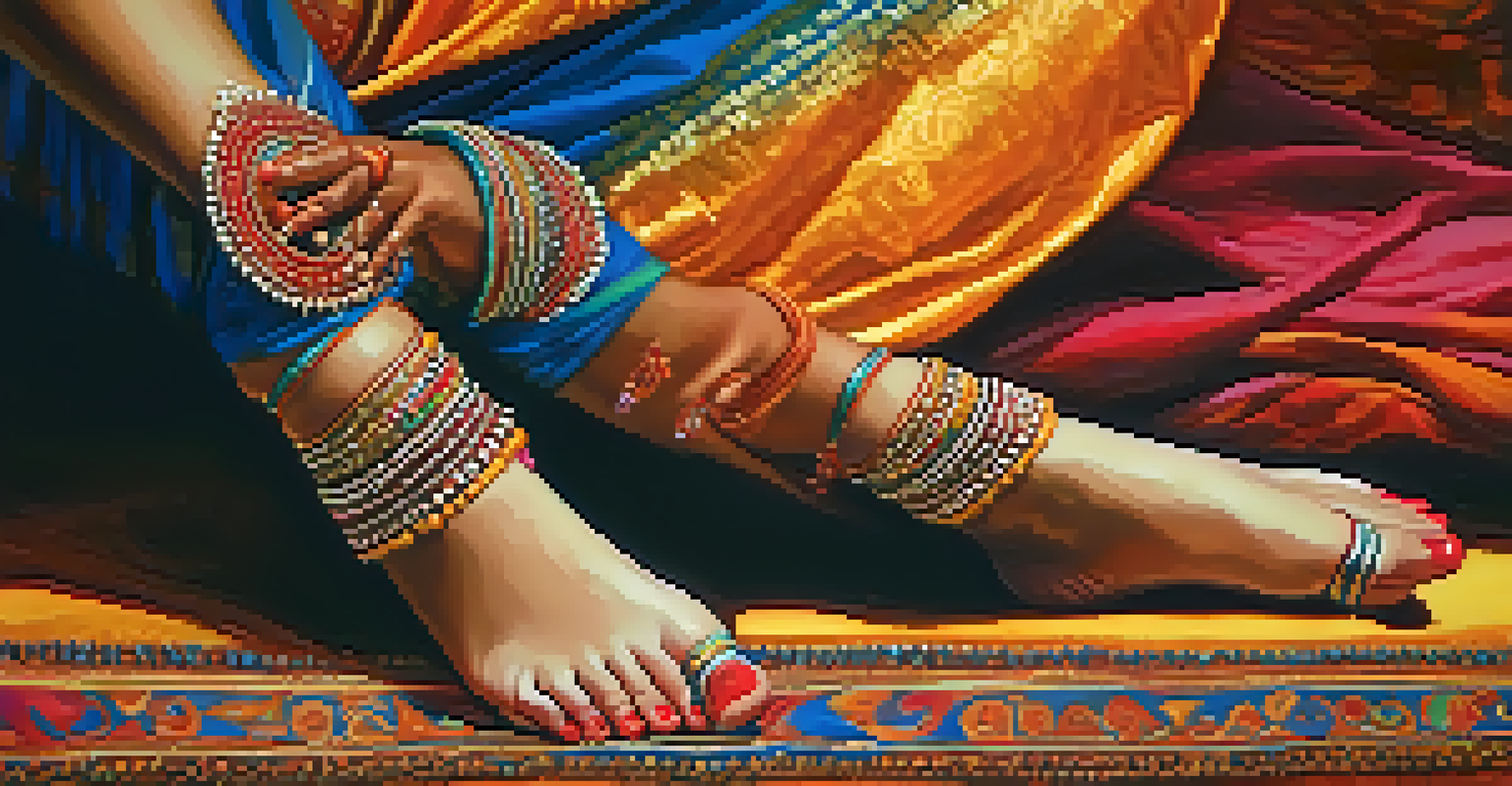Cultural Collaborations: Dance as a Global Language

Dance: A Universal Expression of Humanity
Dance is often described as a universal language, one that transcends the barriers of spoken word. Regardless of where you are in the world, you can find people expressing joy, sorrow, and celebration through movement. This shared form of expression allows individuals from diverse backgrounds to connect on a fundamental level, fostering empathy and understanding.
Dance is the hidden language of the soul.
For instance, think about a wedding celebration. No matter the culture, music and dance typically play a central role. Guests may not share a common language, but through the rhythm and movement, they can celebrate together, forging bonds that words sometimes fail to create.
In this way, dance serves as a bridge, bringing people together in ways that few other forms of communication can. It invites everyone to participate, creating a sense of belonging that is essential in our increasingly interconnected world.
Cultural Diversity in Dance Forms
From ballet to bharatanatyam, the world of dance is a vibrant tapestry woven from countless cultural traditions. Each dance form carries its own story, reflecting the history, values, and beliefs of the culture it originates from. This diversity enriches the global dance landscape and encourages cross-cultural appreciation.

Consider the contrast between the energetic samba of Brazil and the graceful waltz of Austria. Each style not only showcases unique movements but also embodies distinct social contexts and histories. When we explore these forms, we gain insight into the cultures that birthed them, enhancing our understanding of human experiences.
Dance Unites Diverse Cultures
Dance transcends language barriers, allowing people from different backgrounds to connect and celebrate shared human experiences.
By celebrating this diversity, we create opportunities for collaboration and fusion, allowing artists to blend traditions and create something entirely new. This not only keeps traditions alive but also invites fresh perspectives and creativity into the dance world.
Dance as a Tool for Social Change
Dance has long been used as a medium for social change, conveying powerful messages that resonate across cultural divides. Artists leverage the emotional weight of dance to address issues like inequality, injustice, and identity. Through their performances, they spark conversations and inspire action.
Dance is the joy of movement and the heart of life.
For example, the dance movement 'Black Lives Matter' harnesses the power of movement to advocate for racial equality. Dancers perform in public spaces, drawing attention to their cause while inviting the community to witness their struggle. This form of expression not only educates but also empowers others to join the fight for change.
Moreover, when dance is used in awareness campaigns, it can reach audiences that traditional methods might not. By tapping into the universal language of dance, advocates can engage people’s hearts and minds, fostering a deeper understanding of critical social issues.
Collaborative Projects: Blending Styles and Cultures
Collaborative dance projects bring together artists from different backgrounds, creating a melting pot of styles and influences. These collaborations often result in innovative performances that challenge traditional norms and celebrate cultural exchange. The fusion of different dance forms can lead to groundbreaking art that captivates audiences.
A great example is the collaboration between hip-hop dancers from the U.S. and traditional Indian dancers. By merging the sharp, urban movements of hip-hop with the intricate footwork of classical Indian dance, the artists create a unique performance that tells a story transcending both cultures. This not only showcases their individual styles but also highlights the beauty of diversity.
Dance Drives Social Change
Through powerful performances, dance serves as a medium for addressing social issues and inspiring action across communities.
Such projects not only elevate the art form but also foster dialogue between cultures. They encourage participants and audiences alike to appreciate and respect different traditions, ultimately enriching the global dance community.
The Role of Technology in Dance Collaboration
In today’s digital age, technology plays a pivotal role in facilitating cultural collaborations in dance. Online platforms allow artists from different parts of the world to connect and collaborate in ways previously unimaginable. Whether it's through virtual rehearsals or social media challenges, technology has expanded the horizons of dance.
For instance, during the pandemic, many dancers turned to social media to share their routines and collaborate remotely. This not only kept the dance community engaged but also allowed for innovative performances that blended styles from around the globe. The result was a surge in creativity, as artists found new ways to express themselves despite physical distance.
As technology continues to evolve, so too will the opportunities for dance collaborations. We can anticipate even more exciting projects that utilize augmented reality and interactive experiences, further blurring the lines between cultures and styles.
The Impact of Dance Festivals on Cultural Exchange
Dance festivals around the world serve as vital platforms for cultural exchange, allowing artists to showcase their work and share their traditions. These events often feature performances, workshops, and discussions, creating an immersive experience for participants and audiences alike. They foster a sense of community and belonging among dancers from different cultures.
Take, for example, the International Dance Festival held annually in Paris. This festival attracts performers from every corner of the globe, offering them a chance to collaborate and share their unique styles. Attendees not only enjoy the performances but also participate in workshops, learning about different techniques and cultural contexts.
Technology Enhances Dance Collaboration
Digital platforms facilitate innovative collaborations among dancers worldwide, expanding creative possibilities and cultural exchange.
Such festivals play a crucial role in preserving cultural heritage while simultaneously encouraging innovation. They remind us that dance is not just a performance art but a living tradition that thrives on collaboration and exchange.
The Future of Dance as a Global Language
As we look to the future, dance will undoubtedly continue to evolve as a global language of expression and connection. The ongoing blending of styles and collaboration between cultures will drive innovation and creativity in the field. Artists will keep finding new ways to tell their stories through movement, inviting audiences to engage with diverse narratives.
Moreover, as society becomes more interconnected, the importance of understanding and appreciating different cultures will grow. Dance will play a crucial role in fostering empathy, encouraging people to step into the shoes of others through the universal language of movement.

Ultimately, the future of dance lies in its ability to adapt and reflect the world around us. As long as there are stories to tell and emotions to express, dance will remain a powerful tool for cultural collaboration and understanding.